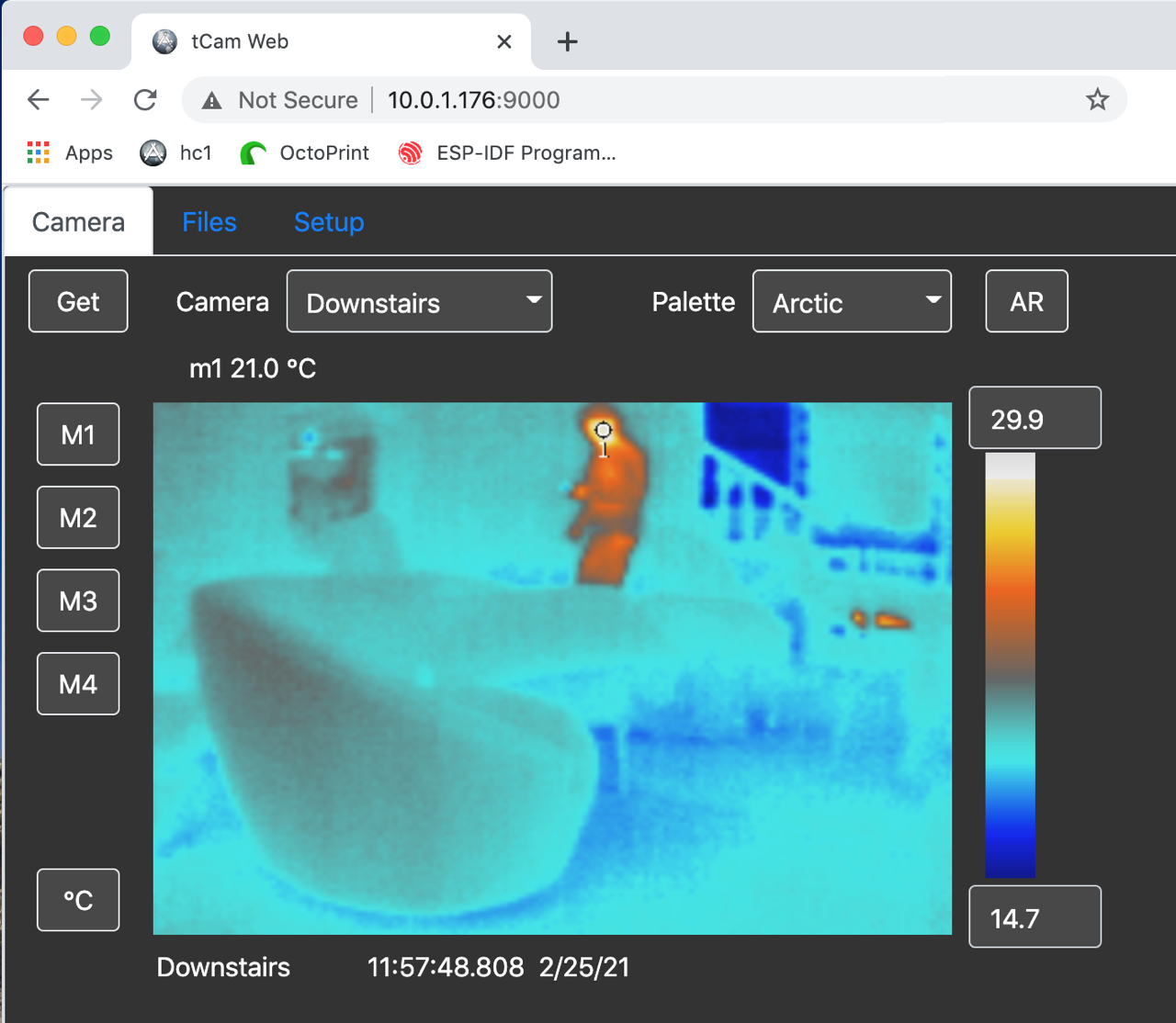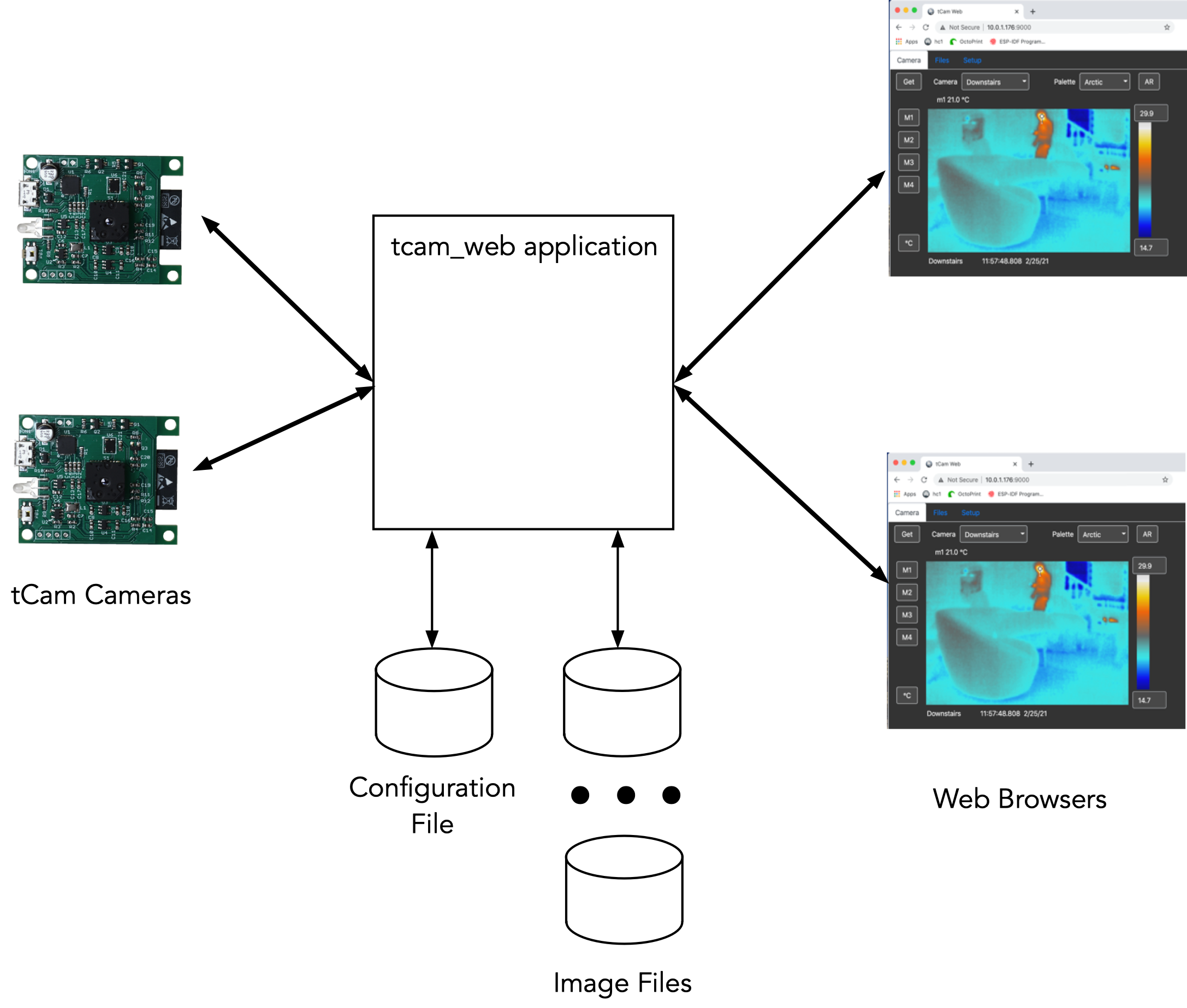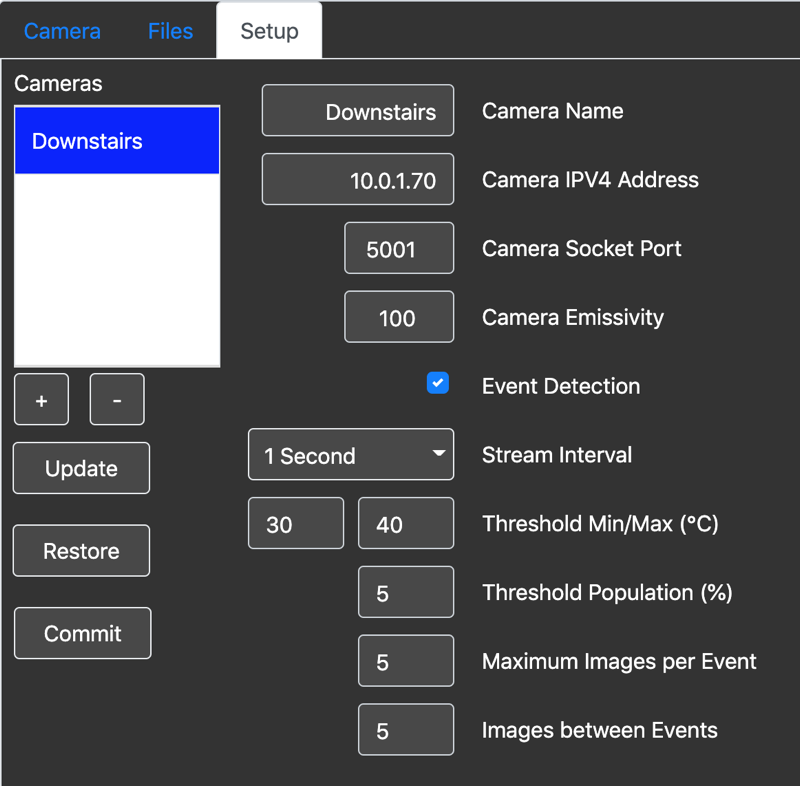One long-standing goal I have had for my thermal cameras was to record events such as a wildlife in our driveway at nights (we think it's pretty busy out there) by detecting parts of the image in certain temperature ranges. Sort of like a very souped up PIR detector. The cameras would act like a security webcam.
I've taken the first steps toward this vision with a prototype of tcam_web, a recording web server for tCam cameras. It's written in xojo (which has some limitations described below) and can run on OS X, Windows and either x86 or ARM7 Linux hosts (my ultimate server will be a RPi 4).

It can connect with one or more tCam cameras via a socket interface and one or more browsers via its web server interface.

It can display an image from a camera or be configured to record images that meet certain detection criteria. To do this it enables the cameras into streaming mode and analyzes the images it receives. Right now the detection criteria is very simple. It will record an image if at least certain percentage of pixels are within a specified temperature range. I did try, unsuccessfully, to create a fast blob detector and hope to return to that at some point. The detection criteria, along with some parameters limiting how many images can be stored based on a detection event, the streaming interval and camera configuration may be setup through the web interface.

The program also allows viewing images it has stored. I intend for this application to be used in conjunction with the desktop tcam application. The desktop application can be used to analyze example images to determine the selection criteria for tcam_web as well as view and analyze images it has recorded.
The xojo development environment allowed me - someone who is not skilled in web techologies at all - to write this application fairly quickly and reusing code originally created for the desktop application. Awesome! Unfortunately while xojo is very mature and effective for writing desktop applications, its new "Web 2.0" API is still slow and a little buggy. The way it renders may be good for controls but is not so good for images. I had hoped to be able to stream images from the camera to the web browser but without learning a bunch of web stuff and digging into their Web SDK that doesn't seem possible. It takes a significant fraction of a second (and, apparently a couple of communication trips back and forth between the browser and application) to load a single image. So right now you can just manually load one image at a time. Also the code is currently single threaded and I suspect to handle more than a couple of cameras I will have to break that task into its own thread or process using their worker class.
Eventually I want the application to be able to email or text (via twillio probably) an image when it has a detection event.
Once the application has been debugged for a bit I will post binaries for the different platforms to github.
I also plan to marry a tCam-Mini with my Solar MPPT charger for deployment in our lower driveway as soon as some snow melts. I'll have the tCam-Mini report the charger's status as its own battery status.
 Dan Julio
Dan Julio
Discussions
Become a Hackaday.io Member
Create an account to leave a comment. Already have an account? Log In.